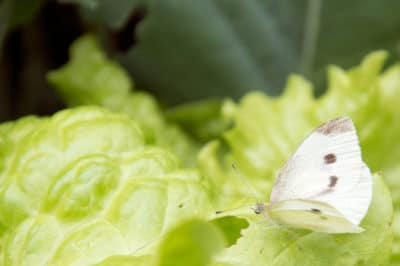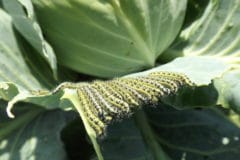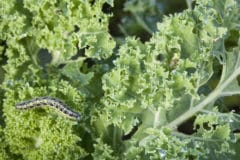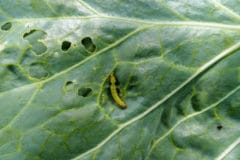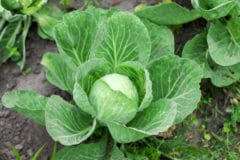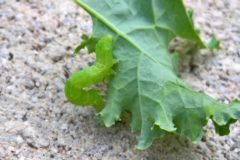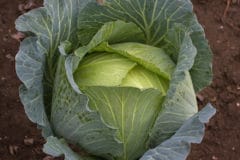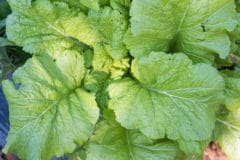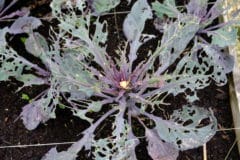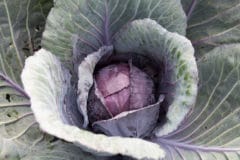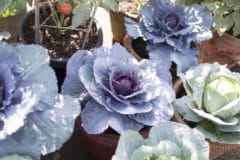Identifying the Caterpillar, the Moth, and the Eggs
The fine hairs on this green caterpillar give it a velvety look. It has faint yellow stripes running along the length of its body, and when fully grown, the caterpillars measure 1-1/4 inches long.
Because they are green, imported cabbage worms are sometimes confused with cabbage loopers or the diamondback moth caterpillar, although the latter two are a lighter green. Sometimes, all three are lumped together as green worms, but each has identifying characteristics. It can be important to know which one is infesting your cabbage.
Imported cabbage white moths are white, as their name suggests, but the underside of the wings have a yellow tint. The upper wings have black spots on them. They are small, measuring only 1-3/4 inches long.
The moths lay their eggs individually, and you might find the eggs anywhere on the plant. The bullet-shaped eggs are ridged, and, when they are first laid, they are white. However, as they mature, they turn yellow.
Where Have All the Leaves Gone?
Imported cabbageworms are small, but they are voracious eaters. If you have an infestation, these caterpillars will eat all the leaves, leaving nothing but the stalks and the ribs.
Exporting Those Imported Pests
One way to prevent imported cabbageworms from attacking your cabbage is to cover it with row covers when you plant it and leave it covered for the entire growing season. With the row covers in place, the moths won’t be able to come near your cabbage to lay their eggs.
If imported cabbageworms have invaded your cabbage, you have several options, including:
- Spraying with bacillus thuringiensis (BT) weekly or biweekly. BT is an organic pathogen that is safe for humans, pets, and most beneficial insects.
- Handpicking the cabbageworms and the eggs from your cabbage as you find the invaders.
- Deploying yellow sticky traps to capture the moths, but the traps might imprison beneficial insects as well.
- Spreading diatomaceous earth around the base of your cabbage. This mixture of crushed, fossilized, sea shells punctures soft bodied insects as they crawl over it, causing them to become dehydrated and die.
- Releasing tiny trichogramma wasps into your garden to parasitize the eggs. These wasps do not sting humans, but the release of the wasps must be timed with the egg laying. The mail order companies that sell the wasps can help with that.
Yellow jackets also prey on imported cabbageworms.
Rye flour sprinkled on the leaves in the morning is supposed to cause the caterpillars to become dehydrated, and the caterpillars are supposed to swell up and die if they eat cornmeal that has been sprinkled on dampened cabbage leaves.
Cabbage Has to Have Friends
Some companion plants can help repel imported cabbageworms, while others lure the caterpillars away from the cabbage.
Because cabbage, cauliflower, Brussels sprouts, broccoli, kale, and kohlrabi are all descended from a common wild mustard plant, insects that are attracted to these crops, like the imported cabbage white moth, are also attracted to mustard.
Research has shown that bittercress, another relative of mustard, not only attracts the diamondback moth but also kills the caterpillars when they begin to feed on it. It may or may not have the same effect on imported cabbageworms.
Thyme, on the other hand, repels these caterpillars.
You can plant both mustard and thyme. Plant thyme near your cabbage to repel imported cabbageworms and plant mustard to lure the caterpillars and moths to an area where you’d prefer that they stay.
